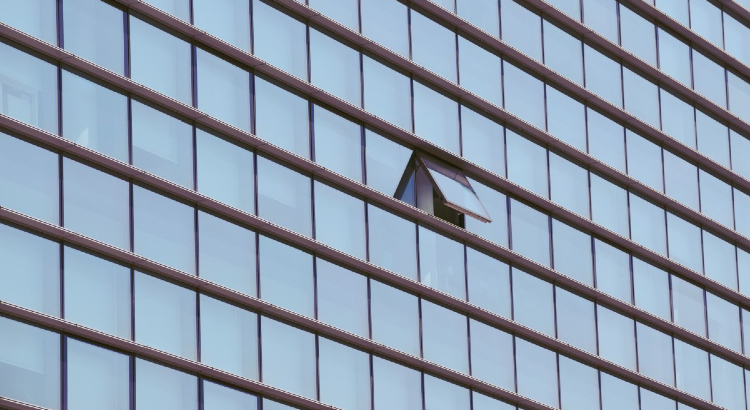Public health guidelines are downplaying the role that building systems should play in stemming the spread of COVID-19, architects, engineers and some scientists are warning.
“The built environment component of this situation has been overlooked,” said Upali Nanda, director of research at HKS Inc. and a leading voice on the science behind healthy buildings.
Nanda and her colleagues are stressing their concerns just as many employers and building owners are reopening offices, shops and other commercial spaces — raising the specter of a resurgence in COVID-19 cases.

One leading advocate argued that both policy leaders and building operators should be wary of a natural bias toward measures that offer the false sense that janitorial crews can “wipe away” the virus.
“If somebody tells you, ‘OK, you get to choose how this disease is transmitted.’ Do you want to believe it’s transmitted by touching things so that you can scowl at people and tell them to use [personal protection equipment] and spray disinfectant,” physician and architect Stephanie Taylor asked in an interview. “Or do you want to say it’s really spread in these practically invisible aerosols that are literally everywhere? That’s a lot more scary.”
The heart of the issue is what researchers have uncovered, as well as what they don’t yet know, about SARS-CoV-2 — the virus that causes the COVID-19 disease — and how it manages to infect people. While public heath authorities say there are no proven cases of human beings acquiring COVID-19 by touching surfaces, they believe it’s possible. One study found that SARS-CoV-2 can survive up to three days on plastic, two days on stainless steel and a much shorter time on copper (a separate study reported a lifespan of a day on wood).

So all public health authorities appear to agree that it’s important for building operators to clean interior surfaces with soap and water, and to disinfect surfaces that are touched frequently.
But the same study also found that the virus can live for at least three hours in aerosols, which are tiny particles that can be carried through the air for long distances. Aerosols are more buoyant than the larger “respiratory droplets” that are more commonly understood to be sneezed, coughed or simply exhaled by infected people.
Because they’re heavier than aerosols, most respiratory droplets fall to the ground or onto surfaces with six feet of being expelled — hence the six-foot social-distancing rule. Although far from perfect, face masks can be effective at blocking these larger droplets, particularly the droplets coming from the person wearing the mask.
According to the prevailing theory, respiratory droplets are the primary vector for spread of SARS-CoV-2. But there’s a great deal of debate among epidemiologists over infection via aerosols. Some believe aerosols could only transmit the disease in unique conditions, such as hospitals, where vulnerable patients might be subject to large concentrations of SARS-CoV-2-carrying aerosols. Others believe that aerosols are potentially a major vector and that they could be responsible for particularly severe cases.

In a recent Washington Post column Harvard public health scientist Joseph Allen noted a strong connection between aerosol, or “airborne,” transmission and indoor “super-spreader events”:
Airborne transmission — caused by small particles that can linger in the air for extended periods of time, unlike droplets from coughs, which settle quickly — is key to understanding why this disease spreads so rapidly in certain circumstances. It’s also key to figuring out how best to reopen our country.
Whether or not that’s the case, the implications are significant for mechanical equipment, because aerosols can be cast widely through various air-handling and ventilating equipment. If those aerosols can carry live SARS-CoV-2 cells over extended distances, unfiltered re-circulation of indoor air would be a potent way to spread the virus.
In April, ASHRAE — the organization that sets standards for heating, cooling and ventilation — appointed a COVID-19 task force that has offered up a bevy of recommendations related to building systems. Among them:
- Maintain a relative humidity of 40 percent to 60 percent inside buildings.
- Install air filters rated at least at MERV-13.
- Minimize the re-circulation of indoor air, and bring in outside air either by mechanical means or by opening windows.
The first of those measures would address both respiratory droplets and aerosols because humidity increases the weight of both types of particles, causing them to fall from the air more quickly. Taylor, the physician and architect, is one in a small group that has campaigned for years for ASHRAE to raise its minimum relative humidity standard for controlled indoor environments from 20 percent to 40 percent .
Among other problems, excessively dry air allows heavier droplets to remain suspended for longer periods.
But the push for a 40 percent humidity minimum has butted up against the trend toward energy efficiency. Lower humidity is less demanding on various mechanical systems, and during the warm season, occupants tend to tolerate higher set temperatures if the humidity is lower.
While ASHRAE hasn’t yet adopted the higher humidity minimum, the COVID-19 task force has recommended that operators keep their buildings above 40 percent during the course of the pandemic.
Meanwhile, better filtration and ventilation would target aerosols by reducing their opportunity to travel around the building. Before the pandemic, MERV-13 filters were mainly used in healthcare settings. Although some systems cannot use MERV-13, ASHRAE and other authorities are suggesting the highest level filters that do fit.
Similarly, building maintenance personnel are being advised to turn off any functions that recirculate indoor air, to open up dampers that increase the importation of outside air, and to open windows where possible.
A key part of the recommendations from public health experts and healthy building advocates is to let in more fresh air by opening windows where possible.
RELATED STORY
COVID-19 in the office: A Guide to Guides
Building experts have by no means argued that owners and employers focus only on humidification, filtration and ventilation..
“Take a systems approach towards re-booting,” Nanda said. “Think about the organizational and policy level first, followed by the building systems and interiors, and finally at the level of individual behavior, which includes use of [personal protection equipment].”
The building systems are being “ignored” in part because dealing with them requires the help of architects, engineers and other professionals, Nanda said. But she added that small business and property owners who have fewer building-operation professionals would benefit by considering some basic principles: Focus on the flow of people, supplies and air, for example. Pay attention to “thresholds” to enforce social distancing and even to check temperatures.
She also advised that office workers consider holding meetings outside and that building occupants spend more time on porches, patios and other “in-between spaces.”
A guide that Nanda and a colleague wrote on the topic attaches specifics to each of those steps. The document, Reboot Readiness: A Primer on How to Design for Contagions, can be downloaded here.
At the same time, she acknowledged, many building owners and occupants are more likely to seek advice from authoritative government sources — and most of those say little, if anything, about building systems.
One example: The Centers for Disease Control and Prevention website guides inquiries to a “Workplace Decision Tool.” Subtitled “Workplace Considerations for Reopening During the COVID-19 Pandemic,” it walks users through a decision tree that links to “healthy hygiene practices,” cleaning, disinfection and social practices — but not to any information about building systems. It mentions “ventilation” once, but there’s no link or further information.
A separate CDC page titled “Interim Guidance for Businesses and Employers Responding to Coronavirus Disease 2019” doesn’t mention ventilation, filtration, humidification or any other building system solutions.
The umbrella page for “Businesses and Workplaces” links to “cleaning and disinfecting” but mentions nothing about buildings systems. While some of the sub-pages go into more detail on the ventilation, they could easily be overlooked.
Other agencies are similarly downplaying the role of building systems. A 32-page “Guidance on Preparing Workplaces for COVID-19” from the Occupational Safety and Health Administration lists “installing high-efficiency air filters” and “increasing ventilation rates” with no further details (although it does include additional information on “engineering controls” for healthcare facilities.
Nanda doesn’t fault public health agencies for the lack of attention to building systems.
“I kind of empathize with the CDC and the World Health Organization in not putting out specific guidelines (for building systems), but I do think they should but draw some attention to the idea that this is an indoor air quality problem,” she said.
“The science about the virus has evolved constantly,” she added. “The first thing we knew was about the six-foot radius and the transmission through touching. Then, it was masks.”
Many epidemiologists still believe that aerosol, or airborne, spread remains a small risk because even if the cells do linger in the air or travel through mechanical systems, they’re likely to appear in low concentrations.
The controversy comes at a crucial time for the coronavirus. On one hand, new cases of COVID-19 appear to be dropping in some parts of the United States. On the other hand, public health experts are nervous about the risks that workers, customers and other occupants will face in busy indoor spaces.
Even the act of reopening buildings carries some unusual risks. Taylor warns that water pipes and air ducts that have sat idle for months could harbor such pathogens as legionella.
“If these buildings have been empty since March, every system needs to be treated like it’s being commissioned all over again,” she said. “They need to checked, inspected and run full force for 24 hours before anyone walks into the building,”
And in the process, she suggested, the contractor hired to do that work should be asked to take the opportunity to follow ASHRAE’s recommendations on humidity, filters, ventilation and other systems.
PHOTO AT TOP: Public domain image.


